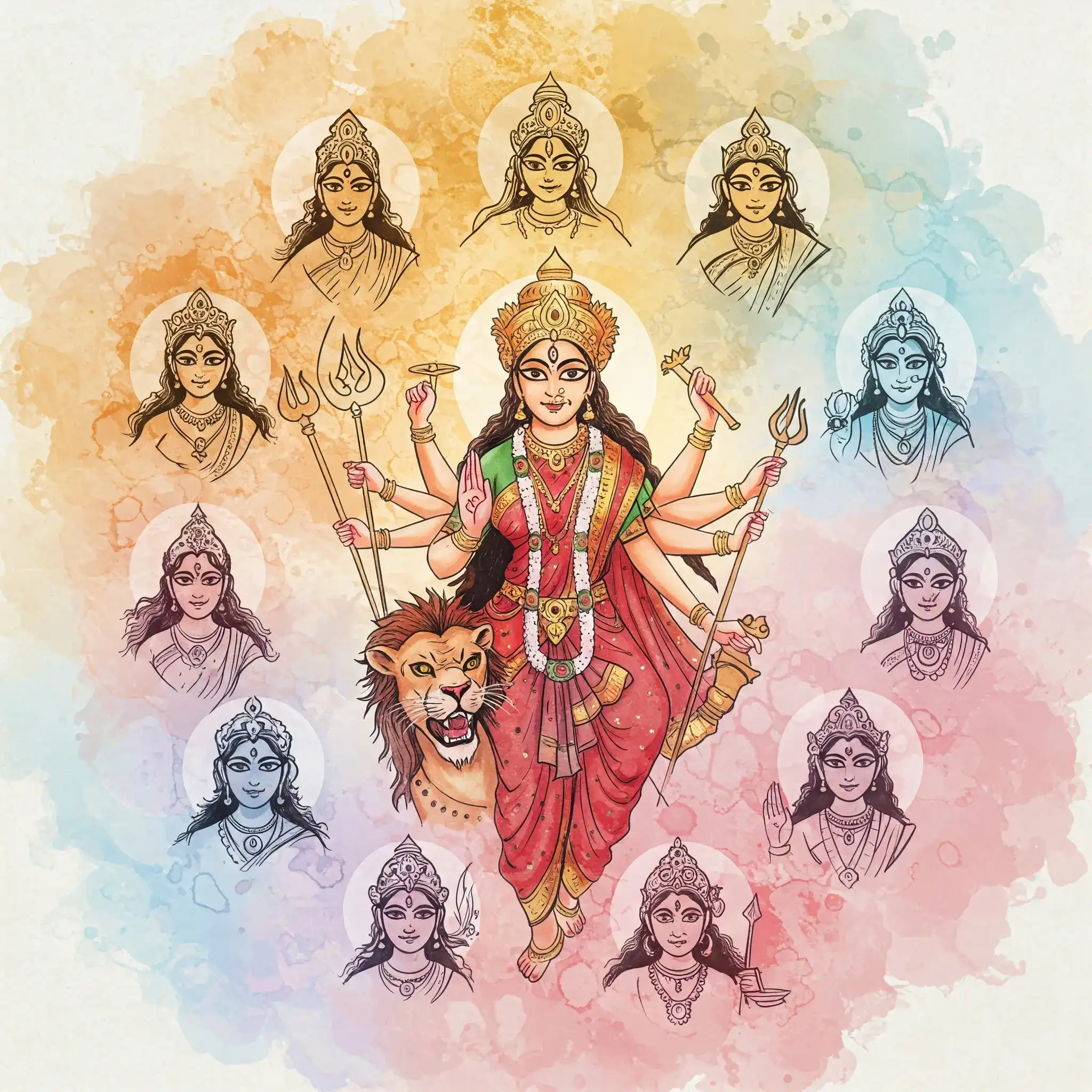Navratri 2025 

Navratri 2025 is set to be a grand celebration of India’s rich cultural tapestry, spiritual devotion, and vibrant traditions. Observed over nine nights and ten days, Navratri honors Goddess Durga and her nine forms, symbolizing the triumph of good over evil. This festival is a testament to India’s unity in diversity, as every region celebrates Navratri in its own unique way, yet with the same spirit of devotion and joy.
Don’t miss: Read our special feature on Navratri Garba 2025 for everything you need to know about this year’s Garba events, traditions, and how to participate!Types of Navratri Celebrated in India
There are four major Navratris observed throughout the year, but two are most widely celebrated:
- Chaitra Navratri (spring): Usually falls in March-April and marks the beginning of the Hindu New Year in many regions.
- Sharad Navratri (autumn): The most popular and widely celebrated, usually in September-October, culminating in Dussehra.
- Magha Navratri and Ashadha Navratri: Lesser-known, observed mainly by dedicated devotees in January-February and June-July respectively.
In 2025, Sharad Navratri will be observed from September 22nd to October 1st, culminating in Dussehra or Vijayadashami. The festival is dedicated to Goddess Durga, who embodies feminine power, courage, and compassion.
How Navratri is Celebrated Across India
Gujarat: The Land of Garba and Dandiya
Gujarat is synonymous with Garba and Dandiya Raas during Navratri. Cities like Ahmedabad and Vadodara come alive with vibrant dance nights, where people dress in colorful traditional attire and dance in large circles to the beats of folk music. Many events now offer online ticketing through platforms such as NavratriGarba.com, making it easier for enthusiasts to join the festivities.
Learn more about this year’s Garba in our Navratri Garba 2025 guide.
West Bengal: Durga Puja Extravaganza
In West Bengal, Navratri coincides with the grand Durga Puja. Elaborate pandals (temporary temples) are set up, showcasing artistic idols of Goddess Durga. The festival is marked by cultural performances, traditional dances like Dhunuchi Naach, and community feasts. The immersion of Durga idols in rivers on Vijayadashami is a spectacular sight.
Maharashtra: Ghatsthapana and Dandiya Nights
Maharashtra celebrates Navratri with Ghatsthapana (installation of a sacred pot) and daily worship of the goddess. Mumbai and Pune host lively Dandiya and Garba nights, blending Gujarati and Maharashtrian traditions. Homes and temples are decorated with flowers and rangoli, and women often observe fasts and perform aarti.
Tamil Nadu, Karnataka & Andhra Pradesh: Golu and Bommai Kolu
In South India, Navratri is known for the unique tradition of Golu or Bommai Kolu, where families display steps of beautifully arranged dolls depicting mythological scenes. Special pujas, classical music, and dance performances are organized, and women exchange gifts and sweets in the spirit of togetherness.
Punjab: Jagrata and Fasting
In Punjab, Navratri is observed with Jagrata (night-long devotional singing) and fasting. Devotees worship Goddess Shakti and participate in community prayers. The festival concludes with Kanya Pujan, where young girls are worshipped as embodiments of the goddess.
Himachal Pradesh: Kullu Dussehra
Navratri in Himachal Pradesh culminates in the famous Kullu Dussehra, a week-long international festival. Deities from nearby villages are brought in grand processions, and the valley resonates with folk music, dance, and fairs.
Kerala: Saraswati Puja and Vidyarambham
In Kerala, the last three days of Navratri are dedicated to Saraswati Puja, honoring the goddess of knowledge. Books and musical instruments are placed before the deity, and children are initiated into learning through the Vidyarambham ceremony.
Other States: Diverse Traditions
- Odisha & Assam: Celebrate with Durga Puja, rituals, and cultural programs.
- Goa: Observes Navratri with unique folk dances like Dhalo and Fugdi.
- Rajasthan: Hosts vibrant fairs and traditional Garba performances.
The Nine Nights: Navadurga Worship
Each night of Navratri is dedicated to one of the nine forms of Goddess Durga, known as Navadurga. Devotees observe fasts, perform aarti, and offer special prayers, seeking blessings for health, prosperity, and protection.
Dussehra: The Triumph of Good Over Evil
Navratri concludes with Dussehra or Vijayadashami, commemorating Lord Rama’s victory over Ravana and the triumph of good over evil. Effigies of Ravana are burnt in public grounds, symbolizing the destruction of negativity.
Unity in Diversity: The Spirit of Navratri
Navratri 2025 beautifully showcases India’s unity in diversity. From Garba in Gujarat to Durga Puja in Bengal, from Golu in Tamil Nadu to Kullu Dussehra in Himachal, the festival brings together people of all backgrounds in celebration, devotion, and joy.
Whether you join a Garba night, visit a Durga Puja pandal, or participate in a Golu display, Navratri is an opportunity to connect with India’s rich heritage and vibrant community spirit. For those looking to experience the best Garba events, online ticketing platforms like NavratriGarba.com make it easy to be part of the festivities.
Wishing you a joyful and blessed Navratri 2025! Jai Mata Di!
last updated on May 14th, 2025
